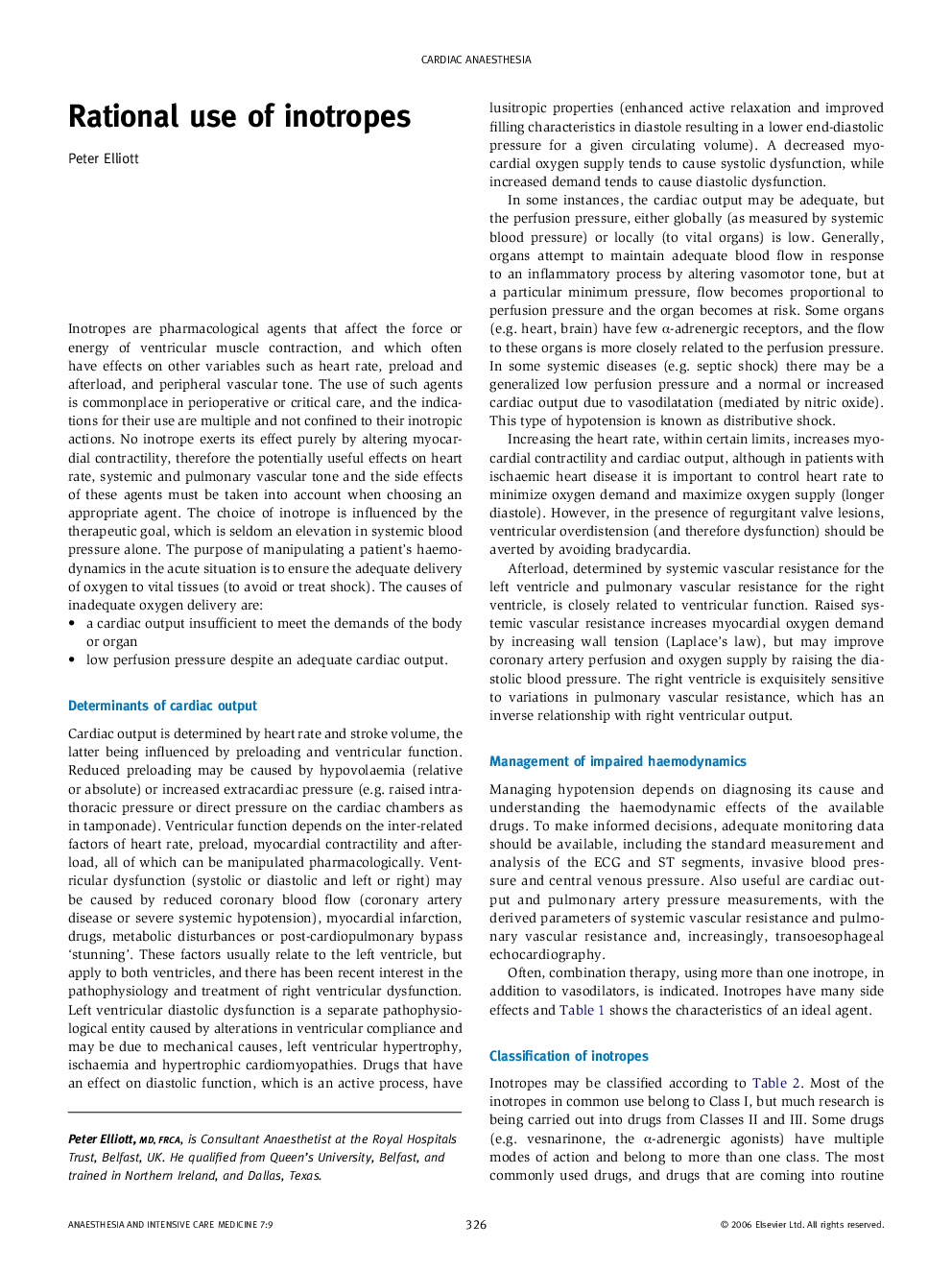| کد مقاله | کد نشریه | سال انتشار | مقاله انگلیسی | نسخه تمام متن |
|---|---|---|---|---|
| 2743921 | 1148715 | 2006 | 5 صفحه PDF | دانلود رایگان |

Inotropes are used in the perioperative or critical care setting primarily to increase cardiac output or perfusion pressure to meet the demands of the body. In addition to increasing myocardial contractility, the most commonly used inotropes have multiple effects (some of which may be detrimental) on preload, afterload, heart rate and rhythm, ventricular relaxation and myocardial oxygen demand. The choice of which agent to use in a particular situation depends on the characteristics of the drug, and the situation in which it is to be used. Inotropes should not be instituted until the volume status of the patient is optimized and adequate monitoring is in place. Drugs that increase intracellular calcium may be classified as Class I drugs. These include those that increase intracellular cyclic AMP such as β−adrenergic receptor agonists and phosphodiesterase inhibitors, those that inhibit the Na-K pump such as digoxin, and those that prolong the action potential duration such as α−agonists and vesnarinone. Drugs that increase the sensitivity of actomyosin to calcium may be classified as Class II. These drugs include vesnarinone, α−agonists and levosimendan. Class III drugs include those that work through a metabolic pathway, such as triiodothyronine. The use of β−adrenergic receptor agonists is limited by down-regulation of β−receptors in patients with chronic heart failure, by the arrhythmias and increased myocardial oxygen demand that they may cause, and by long-term use. As a result, there is much research into the development of drugs that have minimal side effects and are ‘energy-neutral’.
Journal: Anaesthesia & Intensive Care Medicine - Volume 7, Issue 9, September 2006, Pages 326–330